The military called it a “M1 Helmet”, we called it a steel pot – it was heavy and the cause for many a stiff neck during the first few weeks of wear. However, it also served as a useful tool in the bush; it held water when shaving or taking a sponge bath, doubled as a stewing pot when preparing “hobo stew” a mixture of different C-rations and spices over several heat tabs or C-4 for a group meal, a deep vessel to hide a strobe light when used with aircraft to mark your position during the night, and a lethal weapon against rats and other crawly creatures which invaded our personal space.

The helmet ensemble is a two-piece design – one size fits all – where a fiberglass inner liner with straps fit snugly into the steel pot; the straps are adjustable to ensure a snug fit. Most soldiers in basic training wore only the inner liner with masking tape across the back with the last name of the soldier written on it. Nobody dared to write anything else on them.

A cloth camouflage cover – brown on one side and green on the other covered the steel pot – extra material as shown above was folded under and trapped when the liner was inserted. Finally, an elastic band kept the cover snug against the helmet and helped to keep the cloth from sliding out from between the two layers.
Graffiti on helmets was not too common until the Vietnam War where soldiers found a way to express themselves. The most common writings were a girlfriends name, a city and state back home, and a calendar of some kind to show when they were going home. As the war progressed, slogans and other graffiti were proudly displayed by the wearer.

The headband allowed soldiers to carry items on their helmet – the most common being mosquito repellent and LSA lubricant for the ammo and weapons. Touting a playing card or two in the band was sometime used to identify certain people in a unit, a personal good luck charm, or a thought to be psychological weapon against the enemy – the Ace of Spades was the most common card; “the death card” and “shark teeth” painted on the front of helicopters were thought to scare the superstitious enemy soldiers.
Note: NVA soldiers also wrote graffiti on their pith helmets. The most common saying was: “born in the north…died in the south.”
To view this slideshow, click on the first photo to enlarge it and then use the arrow keys to navigate through the presentation. I’m certain many depicted here are modern day recreations, but still mimic those used during the war. If you have a photo with helmet graffiti that you’d like to donate to this presentation, please get in touch with me via personal email. I hope you enjoy the show.
Thank you for taking the time to read this. Should you have a question or comment about this article, then scroll down to the comment section below to leave your response.
If you want to learn more about the Vietnam War and its Warriors, then subscribe to this blog and get notified by email or your feed reader every time a new story, picture, video or changes occur on this website – the button is located at the top right of this page.
I‘ve also created a poll to help identify my website audience – before leaving, can you please click HERE and choose the one item best describing you. Thank you in advance!

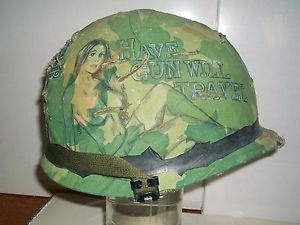


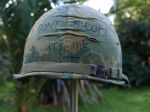


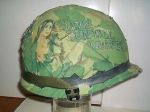
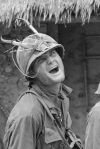

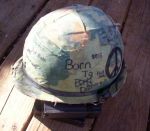


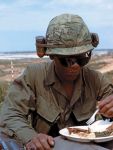


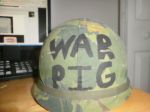
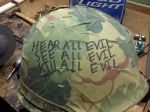



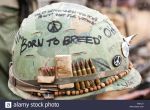



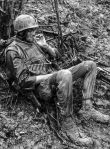
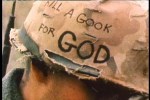


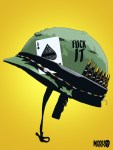






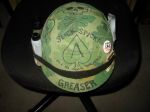


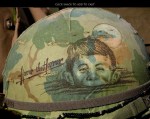

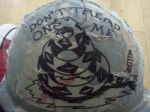


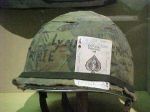
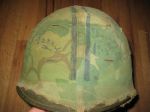
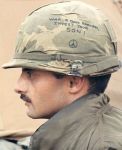
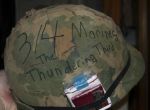


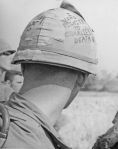
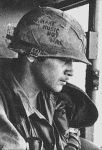





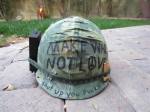




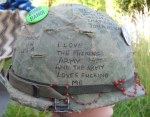

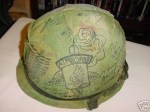

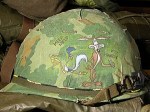
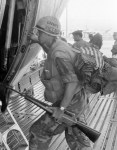

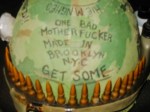


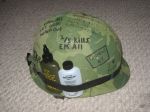

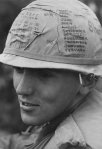
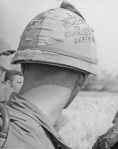
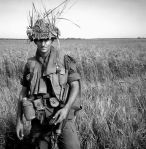
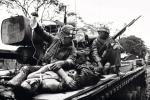

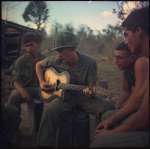

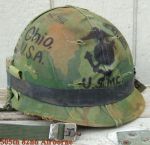
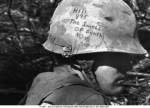
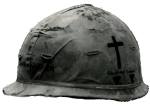







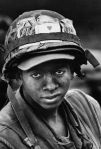
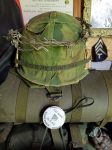
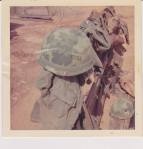


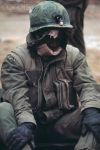
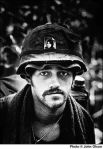
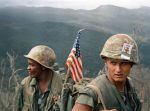

Reinlist for the benefits
LikeLike
Fantastic! More EXposure should brought attention .HOORAH!
LikeLike
Well done.
LikeLike
Thanks. Used a lot for shaving, taking a sponge bath etc….
LikeLike
THANKS for this “Thread” MY QUESTAIN is i always wondered what a soldier that was coming back from his 1 Year commitment From Vietnam was ALOWED to bring BACK Home From Vietnam? I am sure his Helmet was one? But i would really like to know the Regulations as to what a solder could “LEGALY” bring back to the states? / as a child born in “1962” at FT. RUCKER U.S. ARMY HELICOPTER PILOT TRAINING BASE in,ALABAMA. (ozark, Dale,county) & watched Saigon Fall on my 13th birthday april 30/75. (in berkley,california) & crying as i saw those Hueys that my father worked on as a mechanic in the Hueys infancy being tossed off the AIRCRAFT CARRIERS! (on TV) I Vowed that once i was an ADULT I would Learn EVERYTHING i could about the war i grew-up watching (since my father was a huey mechanic in 1962 & with a Growing Family he was NEVER sent to Vietnam However He was Glued to the television to keep-up to the war! I must admit it was sometimes Very Scary when my father was discharged & our family moved back to our home in Berkley,california (where there were many UN- PEACEFULL Protests as there were in san francisco across the bay!
LikeLike
Christopher, I can’t cite regulations but can only relay from my personal experience. First and foremost, there were NO weapons allowed to leave Vietnam – this included my purchased Bowie knife, lucky bullets, a 50 caliber bullet sans the cartridge which I wore on a chain all year, photos of dead enemy soldiers, booze, excessive amount of cigarettes, any drug paraphernalia, and *anything issued* to a soldier upon his entry into Vietnam. I was able to take home my boony hat but not my steel pot, a small suitcase and my duffel bag. Since we wore our fatigues and jungle boots to the US, many of us smuggled our boots home after being issued new dress uniforms and changing at a base in either California or Washington. Other items allowed were those purchased on R&R – civilian clothes, electronics, cameras, cassette and wheel to wheel tapes. I’m sure that I didn’t cover everything, and hope this gives you an idea, though!
On Wed, Aug 29, 2018 at 10:40 AM CherriesWriter – Vietnam War website wrote:
>
LikeLike
Hi Christopher When I got my DEROS (date estimated return from overseas) I just threw my junk in my duffle bag Fatigues and helmet were packed. There was no problems with the “white mice” aka MP’s with those items What they were looking for was weapons and believe it or not grenades
LikeLike
Mate,
just as a matter of interest are you interested in publishing poetry about the Vietnam War? I don’t profess to be any sort of an expert or anything but I’ve written a few poems from my own experience.
Best regards,
Lee
LikeLike
sorry mate but there doesn’t seem to be an interest for poetry at this time. Thanks for asking.
On Wed, Aug 29, 2018, 5:31 AM CherriesWriter – Vietnam War website wrote:
>
LikeLike
Very good. Nostalgia brought to life. Then there were the boonie hats.
LikeLike
Another use – a great pillow…like most others I added a personal touch, drew a feather on back and added a slogan from the title of a book “Custer Died For Your Sins”
LikeLiked by 2 people
This article was very informative and great for history record keeping.
LikeLiked by 1 person
Good article. I don’t know how good this KEVLAR is, but I can’t imagine a piece of shrapnel bouncing off it. I’ll take the steel pot every time.
LikeLiked by 1 person
I have the number one thing strung inside the camouflage band….c-ration toilet paper, at least one if not two, just in case.
LikeLiked by 1 person
This may be a little long, but what the hell. Unfortunately, I don’t have photos of the helmets but I remember them very well. For 6 months in 1969 I was the Battery Commander of C Btry 1/21. We were the direct support battery for the 1st of the 8th Cav, 1st Cav Division. Two of the infantry company commanders were John Alexander Hottell and Walter Joseph Marm. You can google both as they are quite notable and I was privileged to have known and served with them. Among many other things, Alex had written on the right side of his helmet the words of the first two verses, in German, to the German tank song, Das Panzerlied. This is the song that the young tankers sang in the movie, The Battle of the Bulge. Alex convinced me to read a set of books that came in a care package one day – The Lord of the Rings. I only had two words on my helmet – Frodo Lives.
LikeLiked by 1 person
Thank God for you red legs!!! When events went south we could rely on you to save our “6” SK 1/7 First Calvary division (AIRMOBILE)
LikeLike
What? No photo of the iconic helmet from Full Metal Jacket: BORN TO KILL….and….the PEACE SYMBOL. “What are you trying to say, Marine?” “The duality of man, sir!” “Get with the program, Marine. All I ask is that my Marines obey my commends as if they were the word of God!”
LikeLiked by 1 person
It’s in there (left row):
LikeLiked by 1 person
* make that: left ‘column’.
LikeLiked by 1 person
Not one picture of the steel pot cooking Mulligan Stew with hot sauce provided by Lopez or Garcia’s care package
Sent from my iPhone
LikeLiked by 1 person
send me the photo if you have it
On Tue, Aug 28, 2018 at 9:24 AM CherriesWriter – Vietnam War website wrote:
>
LikeLiked by 1 person